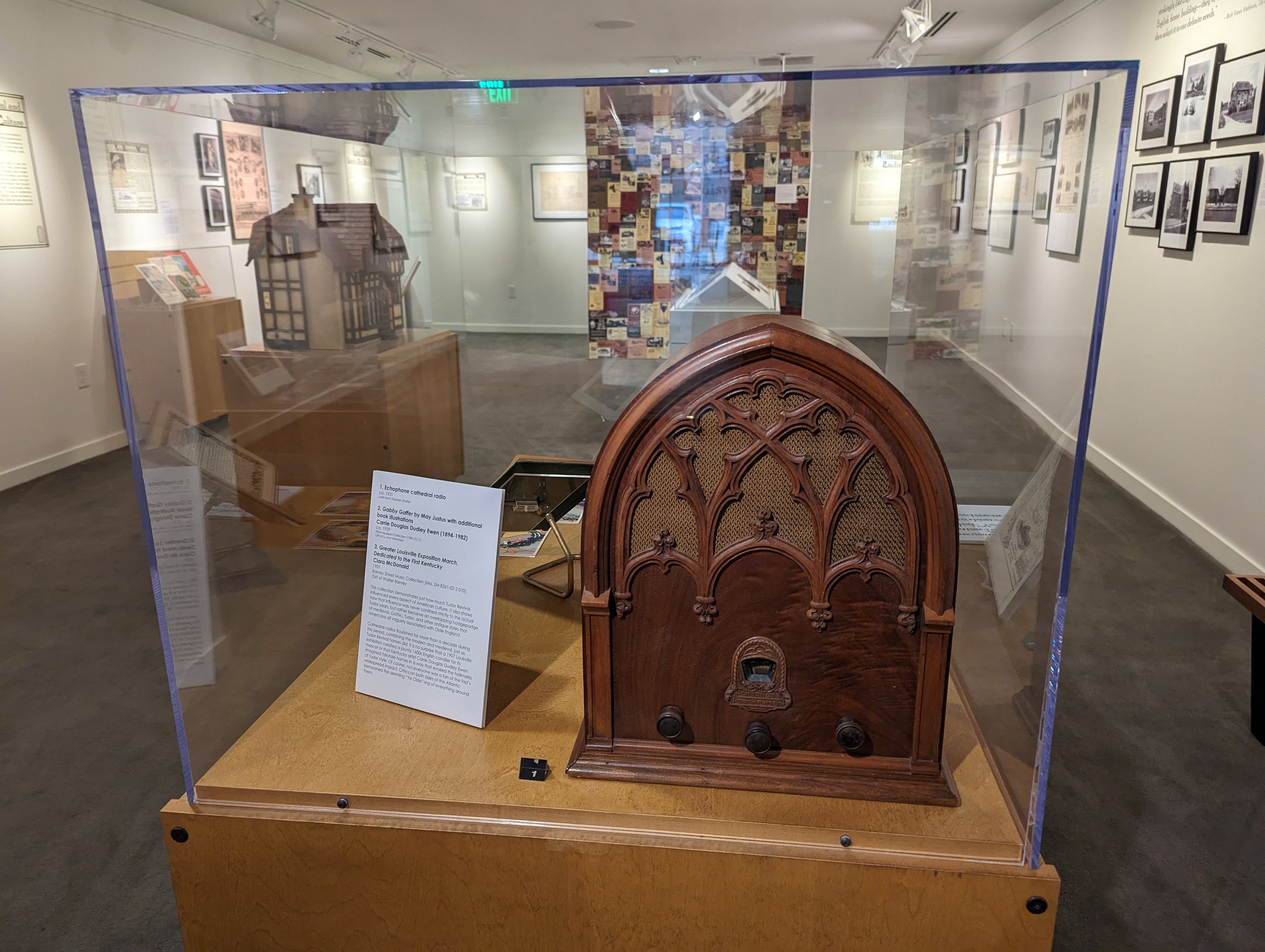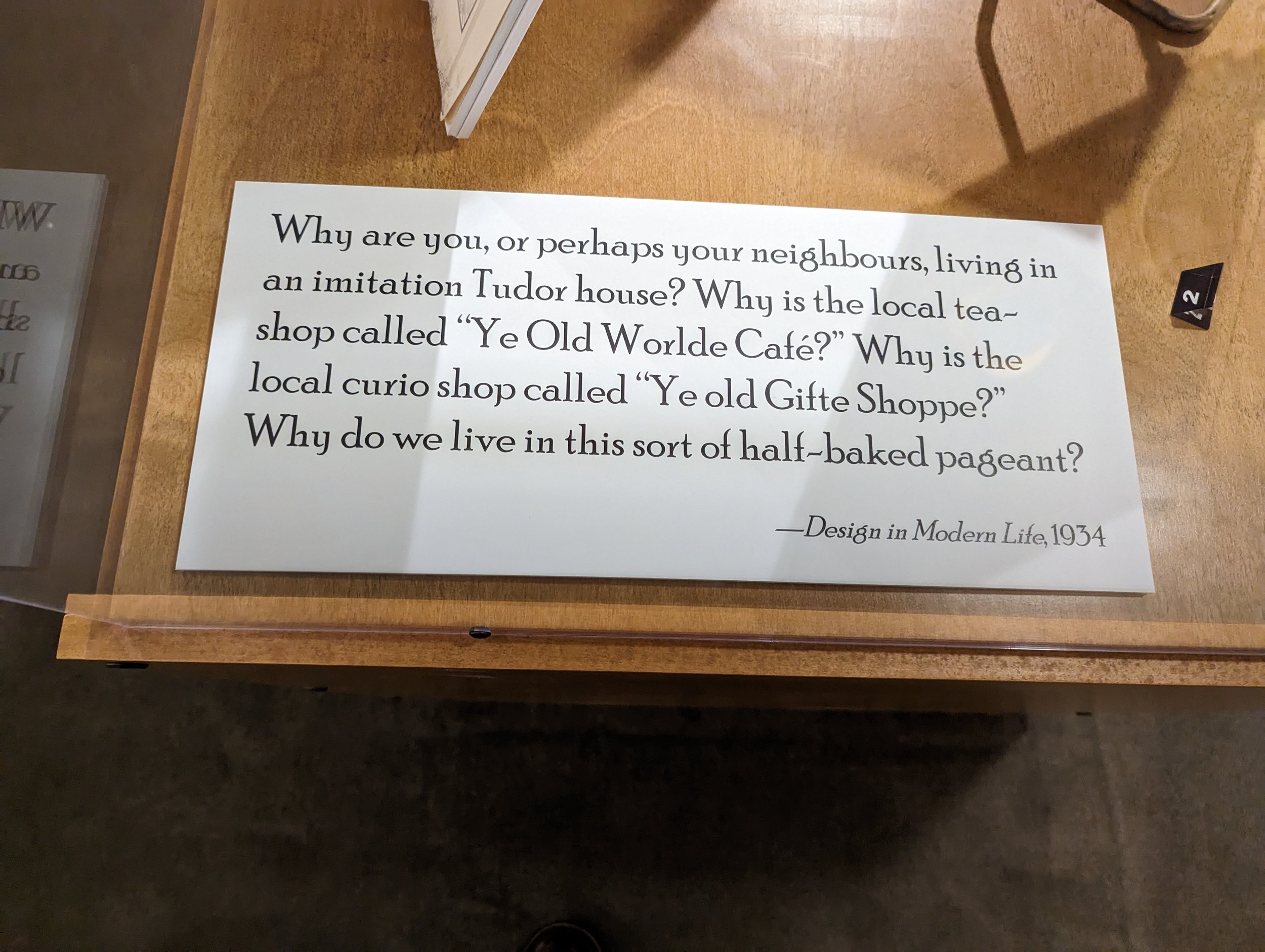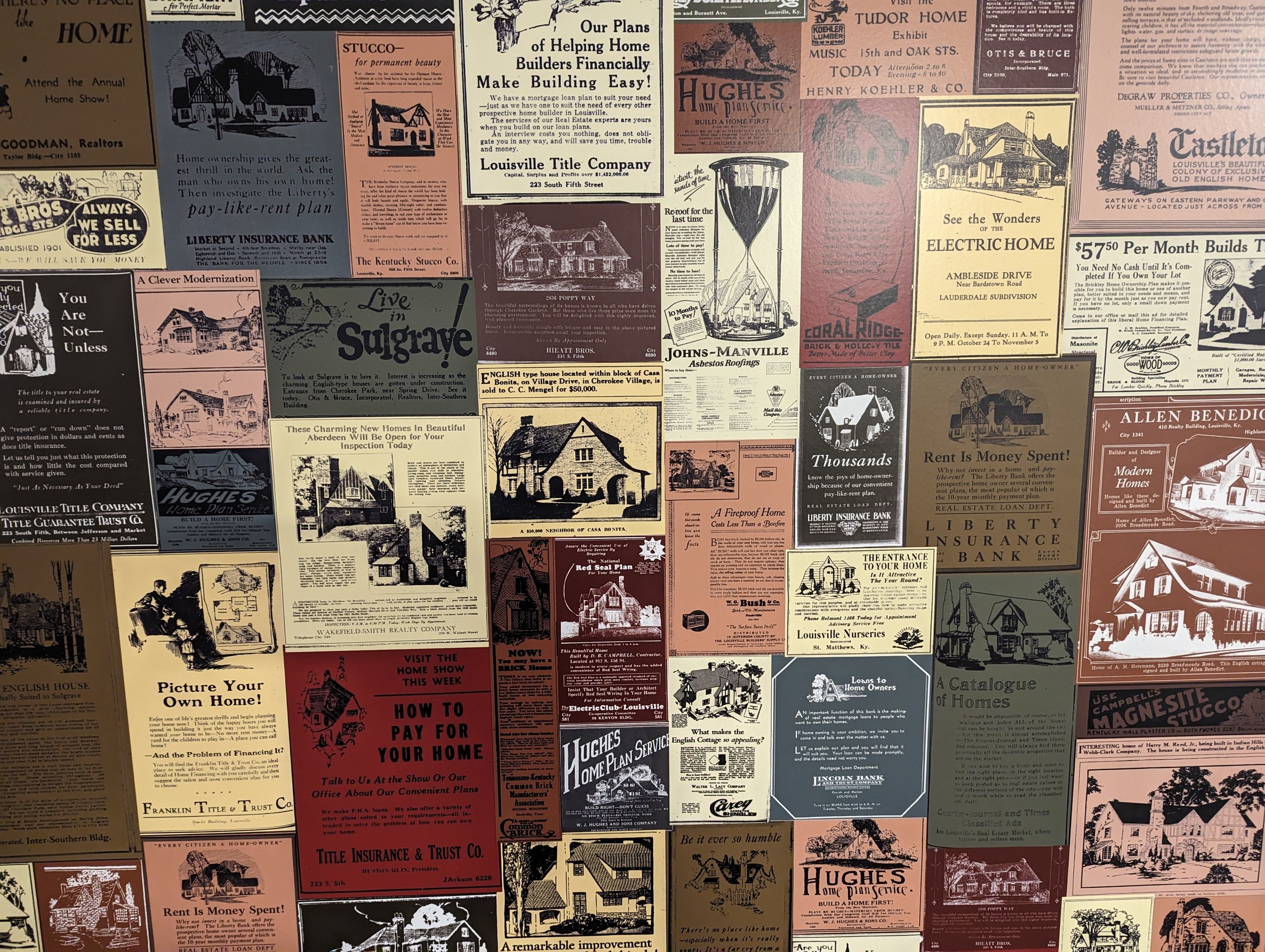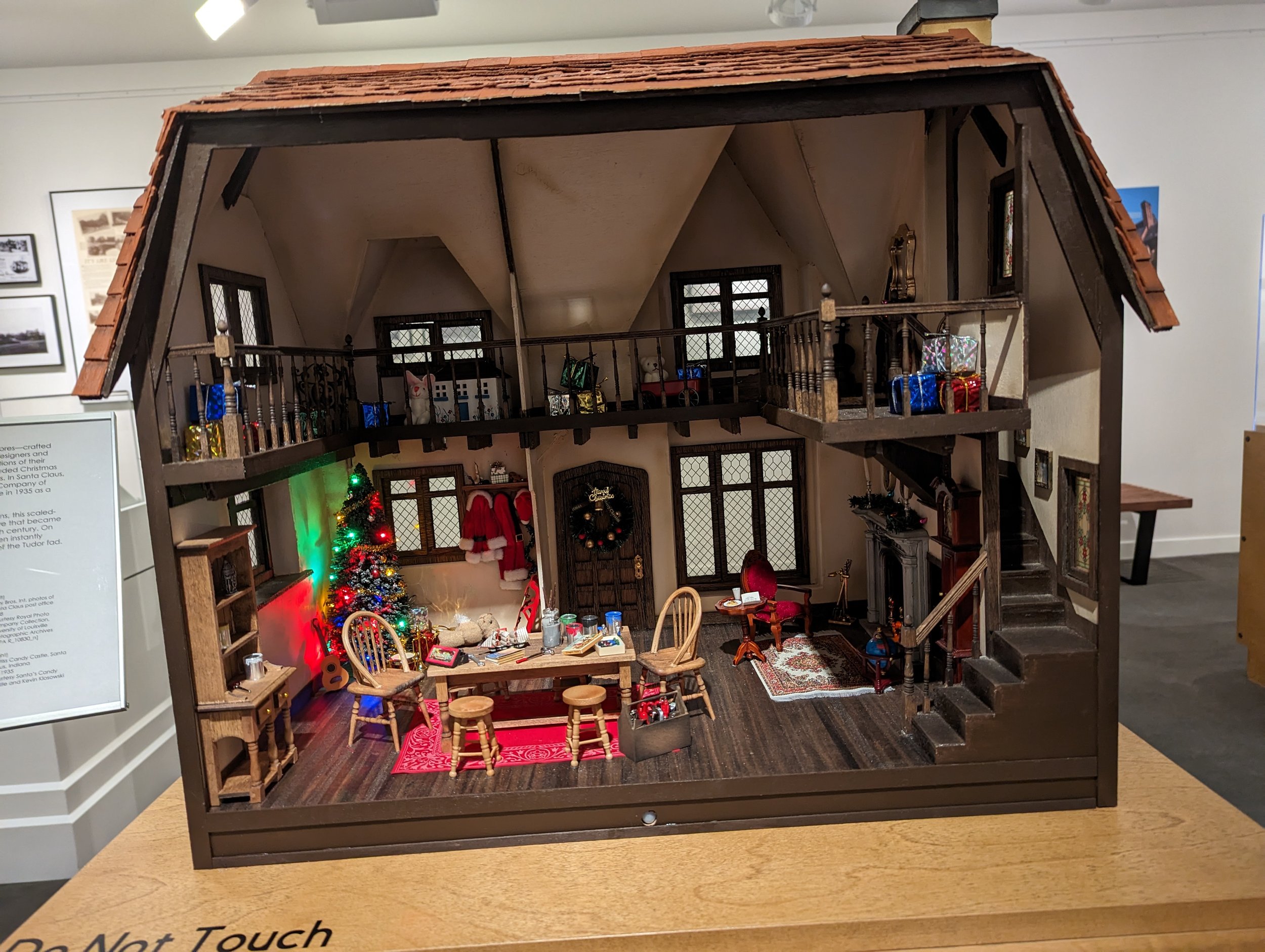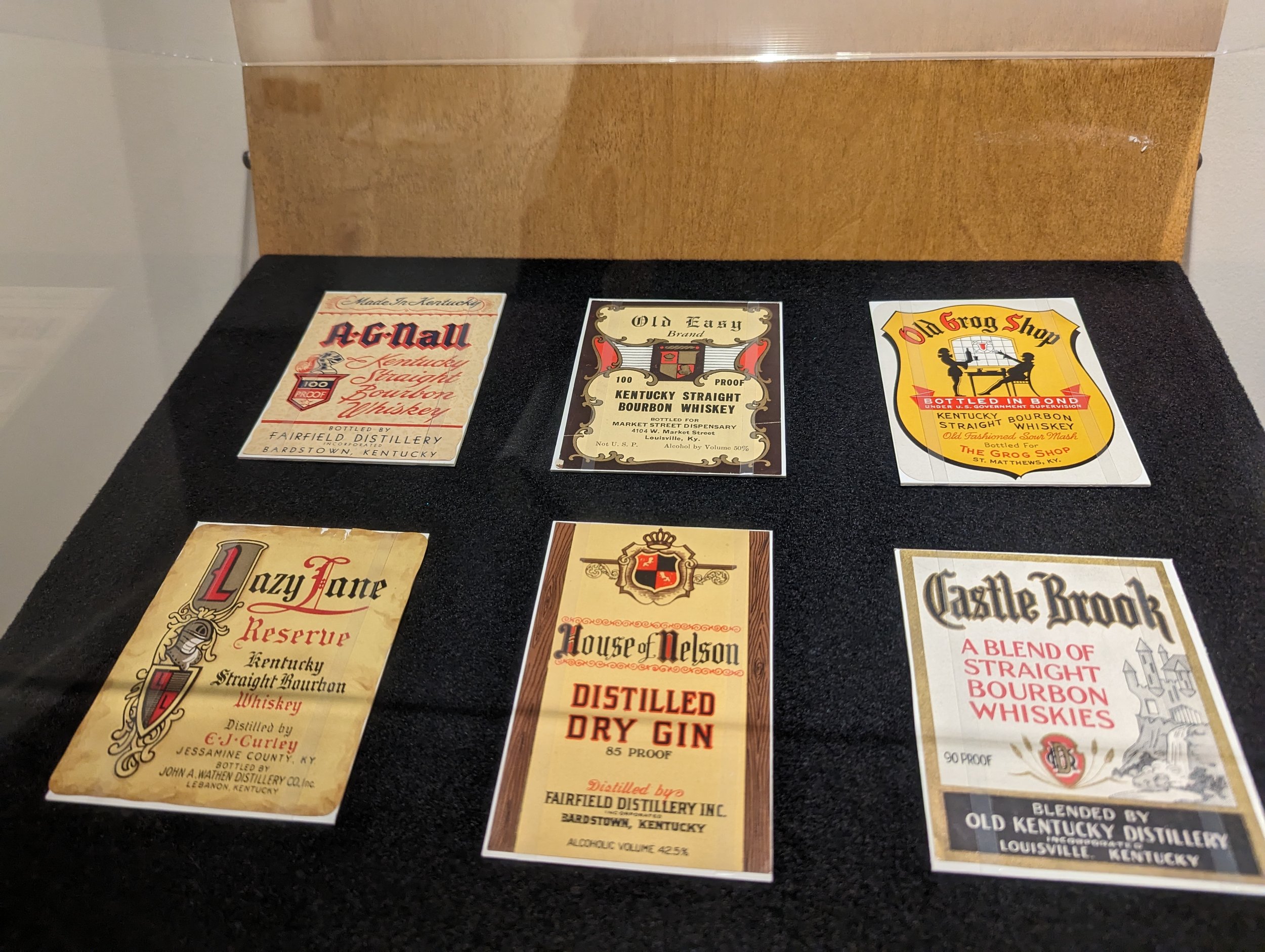'Olde England on the Ohio' Celebrates Louisville's Perspective on the Tudor Revival
‘Olde England on the Ohio’ continues at the Filson Historical Society through March 3. Photos by Kevin Gibson
Tudor Revival architecture rebirth of the 20th century was a world-wide phenomenon that produced homes and other buildings featuring classic Tudor-style designs that dated back to 15th- and 16th-century England, along with Elizabethan architecture of the 17th century. A new exhibit at the Filson Historical Society, titled "Olde England on the Ohio," pays homage to Louisville's Tudor Revival renewal.
Curated by local historian Daniel Gifford, the one-room exhibit features a walk-through narrative that details the history of Tudor Revival architecture, plus various items related to that era of architecture in Louisville, from newspaper advertisements to a scale model replicating Santa Claus's home as a Tudor Revival structure.
Compiled during the Covid-19 shutdown of 2020 – "I had some extra time on my hands," Gifford said – "Olde England" also draws attention to just how many Tudor Revival structures still stand in Louisville, with many of them being in and around the Highlands, particularly in the Bonnycastle area and Cherokee Triangle.
Gifford said the primary goal of the exhibit is to expand upon the idea of what Tudor is – as in, it was more than just architecture. It touched many aspects of American life and culture. You've heard the term, "ye olde" – that phrase came into the American consciousness during the Tudor Revival era.
"We fell in love with everything from Merry old England" during that time, Gifford said.
The style was revived by English architect Richard Norman Shaw in the 1880s. Tudor homes, of course, usually look like exactly what many would envision if they thought of a cottage, with tall windows, half-timbering exteriors, steeply-pitched roofs and tall chimneys. But many buildings in Louisville feature Tudor Revival design, such as Waverly Hills Sanitorium.
Gifford said he did a search for "Tudor homes" on real estate website Zillow.com, and "hundreds came up."
One example of Tudor Revival architecture utilized in "Olde England on the Ohio" is Tudor Terrace, an apartment complex at 1801 Spring Drive that was built in the style in 1927, complete with all the hallmarks of the style, including Medieval flourishes. There's even a display of old spirits bottle labels featuring Tudor designs.
But owing to Gifford's point that it was more than just architecture, one of the items displayed in the exhibit is an Echophone cathedral-style radio from 1931 that features hallmarks of the era. Particularly interesting are the many newspaper advertisements that have been reproduced and turned into a collage. One point "Olde England" makes is that the trend was born of the obsession with Anglo-Saxon traditions that many Americans held during the time of the revival – making many of the resulting trends exclusionary in nature, during a time when the country's population and culture was changing. In other words, many believe the Tudor Revival was part of a tide of racial privelege.
At the same time, the love of that era of English history also contributed to early film – this is why there were so many swashbuckling swordsters in early films. Even the Seven Dwarves of Disney fame lived in a Tudor-style cottage. And as seen in the miniature Santa’s cottage and other parts of the exhibit, the Tudor Revival “reinvented Christmas.”
"There was a certain sense of whimsy about all this," Gifford said.
"Olde England on the Ohio" is free and open to the public at the Filson Historical Society 1310 S 3rd St., through March 3.




